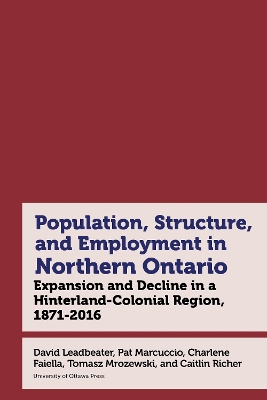Canadian Studies
1 total work
Northern Ontario in Historical Statistics, 1871–2021
by David Leadbeater
Based on original historical tables, Northern Ontario in Historical Statistics, 1871–2021 offers an overview of major long-term population, social composition, employment, and urban concentration trends over 150 years in the region now called “Northern Ontario” (or “Nord de l’Ontario”). David Leadbeater and his collaborators compare Northern Ontario relative to Southern Ontario, as well as detail changes at the district and local levels. They also examine the employment population rate, unemployment, economic dependency, and income distribution, particularly over recent decades of decline since the 1970s.
Although deeply experienced by Indigenous peoples, the settler-colonial structure of Northern Ontario’s development plays little explicit analytical role in official government discussions and policy.
Northern Ontario in Historical Statistics, 1871–2021, therefore, aims to provide context for the long-standing hinterland colonial question: How do ownership, control, and use of the land and its resources benefit the people who live there?
Leadbeater and his collaborators pay special attention to foundational conditions in Northern Ontario’s hinterland-colonial development including Indigenous relative to settler populations, treaty and reserve areas, and provincially controlled “unorganized territories.” Colonial biases in Canadian censuses are discussed critically as a contribution towards decolonizing changes in official statistics.
